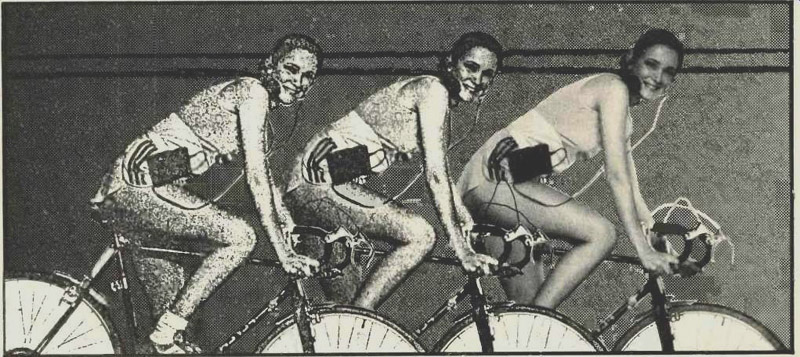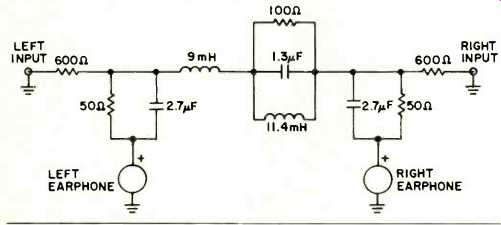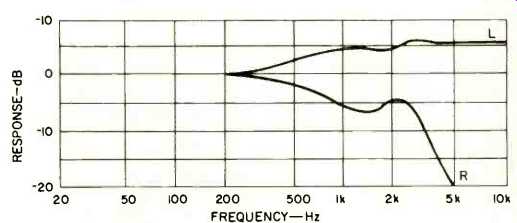
By Charles Repka & Paul Berkowitz
The late Dr. Benjamin Bauer, a man of many talents, made innumerable contributions to a broad spectrum of areas in the audio field. One of his major interests was psychoacoustics, as evidenced by his work in the development of the SQ matrix and his earlier work in the area of binaural hearing.
In the early 1960s, it was observed that in listening to stereo recordings via headphones, an exaggerated stereo effect is heard as compared to the sound of the same recording via loudspeakers. Research by Dr. Bauer and others revealed the main cause of this effect is the lack of the acoustic crossfeed between the left and right ears that occurs naturally when listening to either live music or recordings through loudspeakers. Another factor is the absence of the natural loss of audible separation at low frequencies because of ear spacing. The use of headphones, acoustically isolating the left ear from the right, removes the crossfeed, exaggerates the low-frequency separation, and produces the unnatural spatial effect.

Fig. 1--Original passive circuit for low-impedance headphones designed by
Benjamin B. Bauer.

Fig. 2--Original passive circuit for high-impedance headphones designed by
Bauer.

Fig. 3- Performance of circuits in Figs. 1 and 2.

Fig. 4--Active-filter Bauer circuit.
With this knowledge, Dr. Bauer proceeded to design sever al circuits which electrically simulated the acoustic crossfeed.
Figure 1 shows the circuit devised to drive low-impedance phones, while Fig. 2 shows the version for high-impedance phones, Fig. 3 shows the frequency response and separation produced by either of these circuits. Note that the response below 200 Hz is essentially mono. For a short while, these circuits were produced commercially and incorporated into the Jensen Model CC-1 headphone control center, although this unit has not been available for some time.
Not too long ago, we became involved in a project to produce a series of recordings designed specifically for head phone listening. Since the cost of making several dozen new recordings using binaural techniques was prohibitively ex pensive, we decided to investigate the possibility of using the Bauer circuit to convert existing conventional stereo recordings into binaural recordings by passing the signal from the master tapes through the Bauer circuit and then re-recording the modified signal.
We first tried using the Jensen control center circuitry, but this approach proved impractical because of impedance mismatches that caused large signal losses. The Jensen unit had been designed for connection to the output of a power amplifier and to reduce the output signal to the milliwatt level required by a typical pair of headphones.
We then decided to design an active filter equivalent of the passive networks designed by Benjamin Bauer. After consultations with Dr. Bauer, who was very generous with his advice, and some help from a circuit-analysis computer at Columbia University, Paul Berkowitz came up with the circuit shown in Fig. 4.
This circuit is easy to build and does not require any special parts or critical layout. We built our version using a scrap piece of vector board and buss wire and used 741 and 301 ICs because that's what happened to be handy at the time. Actually, any decent linear IC can be used for all stages.
The blend control, R20, was added as an afterthought.
Originally, we merely had a switch that allowed us to insert the circuit into the signal path but decided it would be useful to have some means of adding the circuit gradually into the signal as well as controlling the amount of blend. The 10 kilohm pot does this quite nicely.
Although the binaural record project never got off the ground, we were left with this handy little circuit. It does not have to be used with a tape recorder but instead can be used with any preamp. The circuit can also be monitored either on the preamplifier's own headphone output or, if more power is needed, via the power amp.
The Bauer circuit, in either active or passive form, is very effective in eliminating the unnatural "ping-pong" stereo that occurs when conventional recordings are heard through headphones. This new active circuit, however, provides the added flexibility of variable separation.
Reference
1. Bauer, Benjamin B., "Stereophonic Earphones and Binaural Loudspeakers, "Jour. of the Audio Engineering Society, Vol. 9, No. 2, 1961.
(Adapted from: Audio magazine, May 1980)
Also see:
The New Featherweight Headphones (May 1981)
Headphones: History and Measurement (May 1978)
Headphones: As Close as You Can Get (Apr. 1991)
Headphones around the house (May 1974)
Illusions for Stereo Headphones (Mar. 1987)
Audio--Pain or Pleasure (Jan. 1981)
= = = =